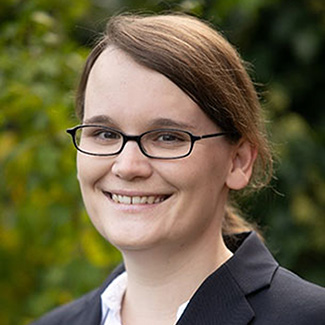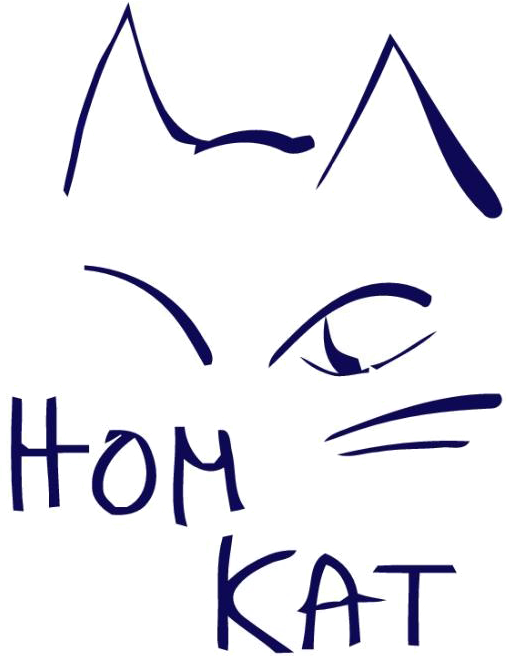
S. (Sonja) Pullen
Tenure Track Assistant Professor
- Phone
- Email
-
Address InfoPostbus 94157, 1090 GD Amsterdam, the Netherlands
SHORT CURRICULUM VITAE
Sonja Pullen (1988) obtained her BSc degree in chemistry in 2010 at WWU Münster, Germany, and performed her BSc thesis in the group of Prof. Frank Glorius. She then moved to Uppsala University, Sweden, where she completed a two-years MSc program in chemistry. From 2012-2017, she did her PhD in the group of Prof. Sascha Ott at Uppsala University. In her thesis she examined different strategies to mimic the outer coordination sphere in [FeFe]-hydrogenase active site models. During her PhD studies, she has been a guest researcher in 2012 in the group of Dr. Matthias Stein, Max-Planck Institute for dynamics of complex technical systems, Magdeburg, Germany. In 2014 she spent one month in the lab of Prof. Seth Cohen University of California, San Diego (UCSD), La Jolla, California, where she learned about post-synthetic modification methods in MOFs. From 2018-2020, Sonja has been post-doctoral researcher with a fellowship of the Marie Skłodowska Curie Actions Program in the group of Prof. Guido Clever at TU Dortmund University, Germany. There she was working on the development of Pd-based coordination cages for catalysis applications. Since December 2020, she is an assistant professor with tenure track in the Homogeneous Catalysis group of the Van ’t Hoff Institute for Molecular Sciences (HIMS) at the University of Amsterdam (UvA).
RESEARCH INTEREST
My research focuses on the function and mechanism of transition metal catalysts embedded in supramolecular structures such as metal-organic frameworks (MOFs) and supramolecular coordination cages (SCCs). This includes catalysts relevant for artificial photosynthesis (e.g. proton- and CO2 reduction, water oxidation) and organic photo-redox catalysis. The main objective is to provide the molecular catalyst with a protective environment that is cooperatively interacting with the active species. Ultimately, this will not only lead to improved performance, but also to controlled alteration of conventional reaction pathways thus to new reactivity.
PUBLICATIONS (before HIMS)
*corresponding author
| 2021 | |
| 24. | S. Pullen*, G. H. Clever, “Catalysis in Confined Space: Relationship Between Metal–Organic Frameworks and Discrete Coordination Cages” in “Reactivity in Confined Spaces” , G. Lloyd (Ed.), R. S. Forgan (Ed.), The Royal Society of Chemistry, 2021. (book chapter) |
| 23. | S. Pullen*, J. Tessarolo, G. H. Clever, “Increasing Structural and Functional Complexity in Self-Assembled Coordination Cages”, Chem. Sci. 2021, 12, 7269-7293. |
| 2020 | |
| 22. | Pullen, S.*; Hegmans, A.; Hiller, W. G.; Platzek, A.; Freisinger, E.; Lippert, B. On the heterogeneous nature of Cisplatin-1-methyluracil complexes: Coexistence of different aggregation modes and partial loss of NH3 ligands as likely explanation. Chemistry Open 2021, 10, 28-45. |
| 21. | Pullen, S.; Löffler, S.; Platzek, A.; Holstein, J. J.; Clever, G. H. Substrate and Product Binding inside a Stimuli-Responsive Coordination Cage acting as Singlet Oxygen Photosensitizer. Dalton Trans. 2020, 49, 9404-9410. |
| 20. | Bozal-Ginesta, C.; Pullen, S.; Ott, S.; Hammarström, L. Self-Recovery of Photochemical H2 Evolution with a Molecular Diiron Catalyst Incorporated in a UiO-66 Metal-Organic Framework ChemPhotoChem 2020, 4, 287-290. |
| 2019 | |
| 19. | Pullen, S.; Hiller, W. G.; Lippert, B. Regarding the diamagnetic components in Rosenberg’s “platinum pyrimidine blues”: Species in the cis-Pt(NH3)2-1-methyluracil system. Inorganica Chimia Acta 2019, 494, 168-180. |
| 18. | Wang, S.; Pullen, S.; Weippert, V.; Liu, T.; Ott, S.; Lomoth, R.; Hammarström, L. Direct Spectroscopic Detection of Key Intermediates and the Turnover Process in Catalytic H2 Formation by a Biomimetic Diiron Catalyst Chem. Eur. J. 2019, 25, 11135-11140. |
| 17. | Pullen, S.; Maji, S.; Stein, S.; Sascha, S. Restricted rotation of an Fe(CO)2(PL3)-subunit in [FeFe]-hydrogenase active site mimics by intramolecular ligation. Dalton Trans. 2019, 48, 5933-5939. |
| 2018 | |
| 16. | Pullen, S.*; Clever, G. Mixed Ligand Metal-Organic Frameworks and Heteroleptic Coordination Cages as Multifunctional Scaffolds – A Comparison. Acc. Chem. Res. 2018 51, 3052-3064. |
| 15. | Gilbert Gatty, M.; Pullen, S.; Sheibani, E.; Tian, H.; Ott, S.; Hammarström, L. Direct evidence of catalyst reduction on dye and catalyst co-sensitized NiO photocathodes by mid-infrared transient absorption spectroscopy. Chem. Sci. 2018, 9, 4983-4991. |
| 2017 | |
| 14. | Pullen, S.; Roy, S.; Ott, S. [FeFe] Hydrogenase Active Site Model Chemistry in a UiO-66 Metal-Organic Framework. Chem. Commun. 2017, 53, 5227. |
| 13. | Roy, S.; Pascanu, V.; Pullen, S.; Gonzalez Miera, G.; Martin-Matute, B.; Ott, S. Catalyst Accessibility to Chemical Reductant in Metal-Organic Frameworks. Chem. Commun. 2017, 53, 3257. |
| 12. | Mijangos, E.; Roy, S.; Pullen, S.; Lomoth, R.; Ott, S. Electrochemical characterization of an organometallic catalyst incorporated in a non-conducting metal-organic framework. Dalton Trans. 2017, 46, 4907. |
| 11. | Morales Salazar, D.; Mijangos, E.; Pullen, S.; Gao, M.; Orthaber, A. Functional small molecules and polymers containing P=C and As=C bonds as hybrid pi-conjugated materials. Chem. Commun. 2017, 53, 1120. |
| 10. | Pavliuk, M. V.; Cieslak, A. M.; Abdellah, M.; Budinska, A.; Pullen, S.; Sokolowski, K.; Fernandes, D. L. A.; Szlachetko, J.; Bastos, E. L.; Ott, S.; Hammarstrom, L.; Edvinsson, T.; Lewinski, J.; Sa, J. Hydrogen Evolution with Nanoengineered ZnO Interfaces Decorated by a Beetroot Extract and a Hydrogenase Mimic. Sustainable Energy and Fuels 2017, 1, 69-73. |
| 2016 | |
| 9. | Pullen, S.; Ott, S. Photochemical Hydrogen Production with Metal-Organic Frameworks. Top. Catal. 2016, 59, 1712-1721. |
| 8. | Brown, A. M.; Antila, L. J.; Mirmohades, M.; Pullen, S.; Ott, S.; Hammarström, L. Ultrafast Electron Transfer between Dye and Catalyst on a Mesoporous NiO Surface. J. Am. Chem. Soc. 2016, 138, 8060. |
| 7. | Pavliuk, M. V.; Mijangos, E.; Makhankova, V. G.; Kokozay, V. N.; Pullen, S.; Liu, J.; Zhu, J.; Styring, S.; Thapper, A. Homogeneous Cobalt/Vanadium Complexes as Precursors for Functionalized Mixed Oxides in Visible-Light-Driven Water Oxidation. ChemSusChem 2016, 9, 2957. |
| 2015 | |
| 6. | Fei, H.; Pullen, S.; Wagner, A.; Ott, S.; Cohen, S. M. Functionalization of Robust Zr(IV)-based Metal-Organic Framework Films via a Postsynthetic Ligand Exchange. Chem. Commun. 2015, 51, 66. |
| 2014 | |
| 5. | Pullen, S.; Brinkert, K. SolEn for a Sustainable Future: Developing and Teaching a Multidisciplinary Course on Solar Energy To Further Sustainable Education in Chemistry. J. Chem. Educ. 2014, 91, 1569. |
| 4. | Mirmohades, M.; Pullen, S.; Stein, M.; Maji, S.; Ott, S.; Hammarström, L.; Lomoth, R. Direct Observation of Key Catalytic Intermediates in a Photoinduced Proton Reduction Cycle with a Diiron Carbonyl Complex. J. Am. Chem. Soc. 2014, 136, 17366. |
| 3. | Nishida, J.; Tamimi, A.; Fei, H.; Pullen, S.; Ott, S.; Cohen, S. M.; Fayer, M. D. Structural Dynamics inside a Functionalized Metal-Organic Framework Probed by Ultrafast 2D IR Spectroscopy. PNAS 2014, 111, 18442. |
| 2013 | |
| 2. | Pullen, S.; Fei, H.; Orthaber, A.; Cohen, S. M.; Ott, S. Enhanced Photochemical Hydrogen Production by a Molecular Diiron Catalyst Incorporated into a Metal-Organic Framework. J. Am. Chem. Soc. 2013, 135, 16997. |
| 2012 | |
| 1. | Karnahl, M.; Tschierlei, S.; Erdem, O. F.; Pullen, S.; Santoni, M.-P.; Reijerse, E. J.; Lubitz, W.; Ott, S. Mixed-valence [FeIFeII] hydrogenase active site model complexes stabilized by a bidentate carborane bis-phosphine ligand. Dalton Trans. 2012, 41, 12468. |
PhD THESIS
Pullen, S. Doctoral thesis, Mimicking the Outer Coordination Sphere in [FeFe]-Hydrogenase Active Site Models: From Extended Ligand Design to Metal-Organic Frameworks. Comprehensive summary, Acta Universitatis Upsaliensis, 2017 ISBN: 978-91-554-9878-8.
